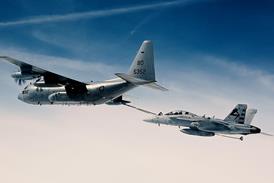Japan's transport ministry is examining ways to liberalise regulated domestic air fares, following the recent decision to scrap restrictions on the number of carriers vying for a single route.
A team of ministry advisers is looking at scrapping supply-and-demand adjustments to domestic air fares and replacing the system with a more flexible one. Japan has already begun a partial liberalisation process by allowing airlines to raise or lower air fares by up to 25% within a pre-set band.
"Japan is going to face some drastic changes in aviation," predicts All Nippon Airways (ANA) senior vice-president Koji Yamashita. "Everything is now on the table, including the abolition of zone air fares," he says.
The first step may involve removing the lower (25%) price band and allowing airlines to offer cheaper discounted air fares. Airlines expect a maximum price ceiling to be retained in the interim.
Moves to relax air-fare regulations, along with a decision to end the system of double and triple tracking, could have major implications for some of Japan's more remote and uneconomical destinations. ANA says that some two-thirds of its 100 domestic routes, served by more than 500 daily flights, are either unprofitable or break even.
To sustain the so-called "life-support lines", Japan's domestic carriers are looking to local government to provide subsidies for uneconomical services. While ANA concedes that it has a public responsibility to serve unprofitable routes, Yamashita says that subsidies "-will be a key issue".
Aviation analysts suggest that, even once double tracking (which requires a minimum of 200,000 passengers a year carried by two domestic airlines) and triple tracking (a minimum of 350,000 passengers carried by three) is ended, this is unlikely to have any major effect on domestic competition until airport capacity is expanded.
Some 60% of Japan's 80 million domestic travellers pass through Tokyo's Haneda Airport, which is at maximum capacity. A third runway is due for completion in 1999, which will increase capacity.
Source: Flight International























